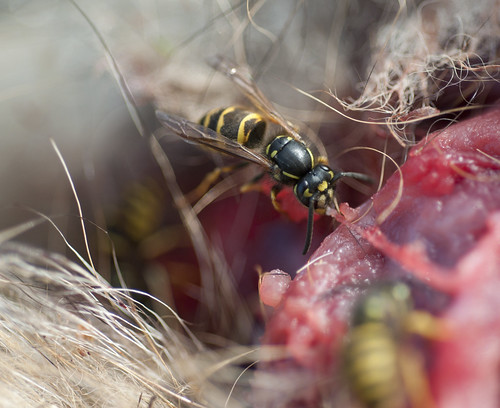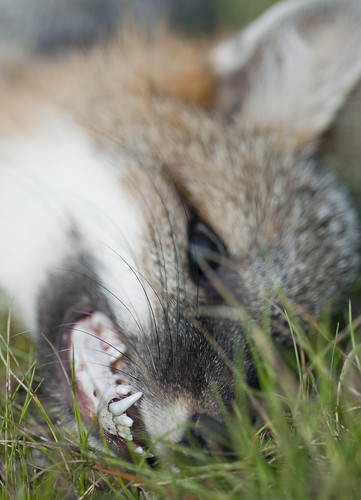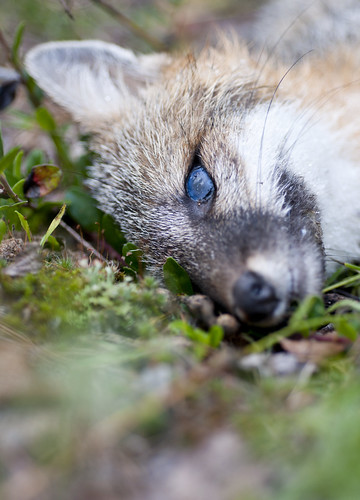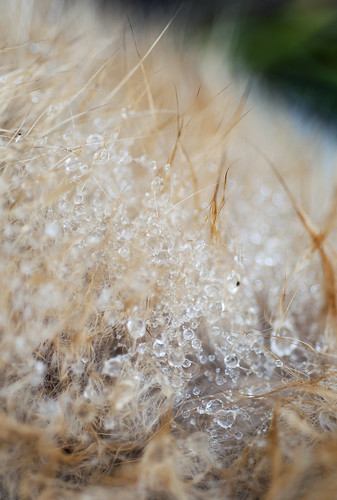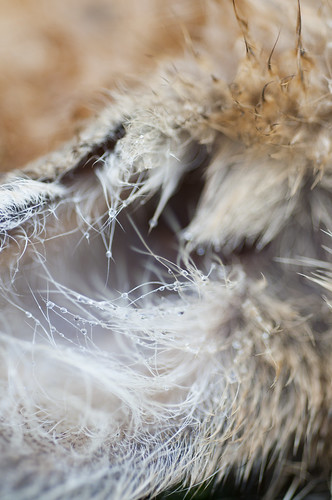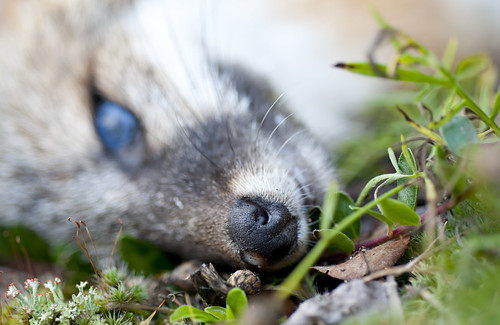But sure enough, just a hundred feet or so down the road from our house, there it was — a gray fox pup stretched out in the grass, its entrails strung out behind it, already blackened by the heat of the sun. Flies had arrived on the scene, but so had several dozen yellow jackets. The wasps crowded themselves onto the exposed flesh and viscera, their jaws tearing away at the muscle, and it was a decidedly disturbing spectacle.
The loud cawing and croaking we'd heard this morning was explained, as well: the scavenging crows had left several feathers behind. As for the fox, unlike the one I photographed last Sunday, this one had been killed on the spot: its belly had burst open and its jaw was smashed, culminating in a grisly stain on the pavement.
Dew still clung to the soft summer fur.
Not only had the fox's jaw been smashed, but it had also been skinned down to the bone. The scrape of the pavement had torn away the gums and flesh; it was a bizarre, haunting sight.
This fox, too, was still in the process of growing its set of adult teeth — but it was much further along than last week's fox. I don't believe they were in the same litter.
As I said in my last entry, I hate to see dead foxes. This is the time of year when young animals are becoming independent; as a result, many are hit on the road — skunks, raccoons, and foxes alike. It's a waste of life, and it's a reminder to slow down when you're driving.

